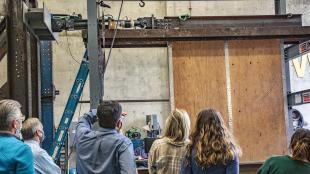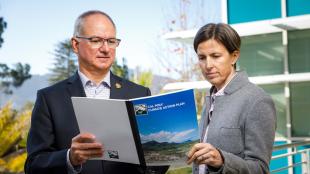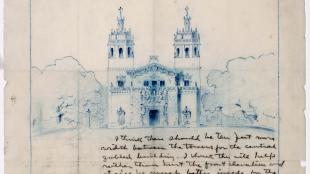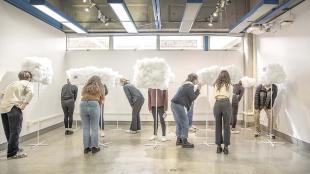Architecture Student Chloe Wardrick Receives Cal Poly MLK Legacy Award

Chloe Wardrick is a fifth-year architecture student minoring in sustainable environments and real property development. She’s also the first student to be nominated for the annual Cal Poly MLK Legacy Award, which she co-accepted with Professor Amber Williams in late January.
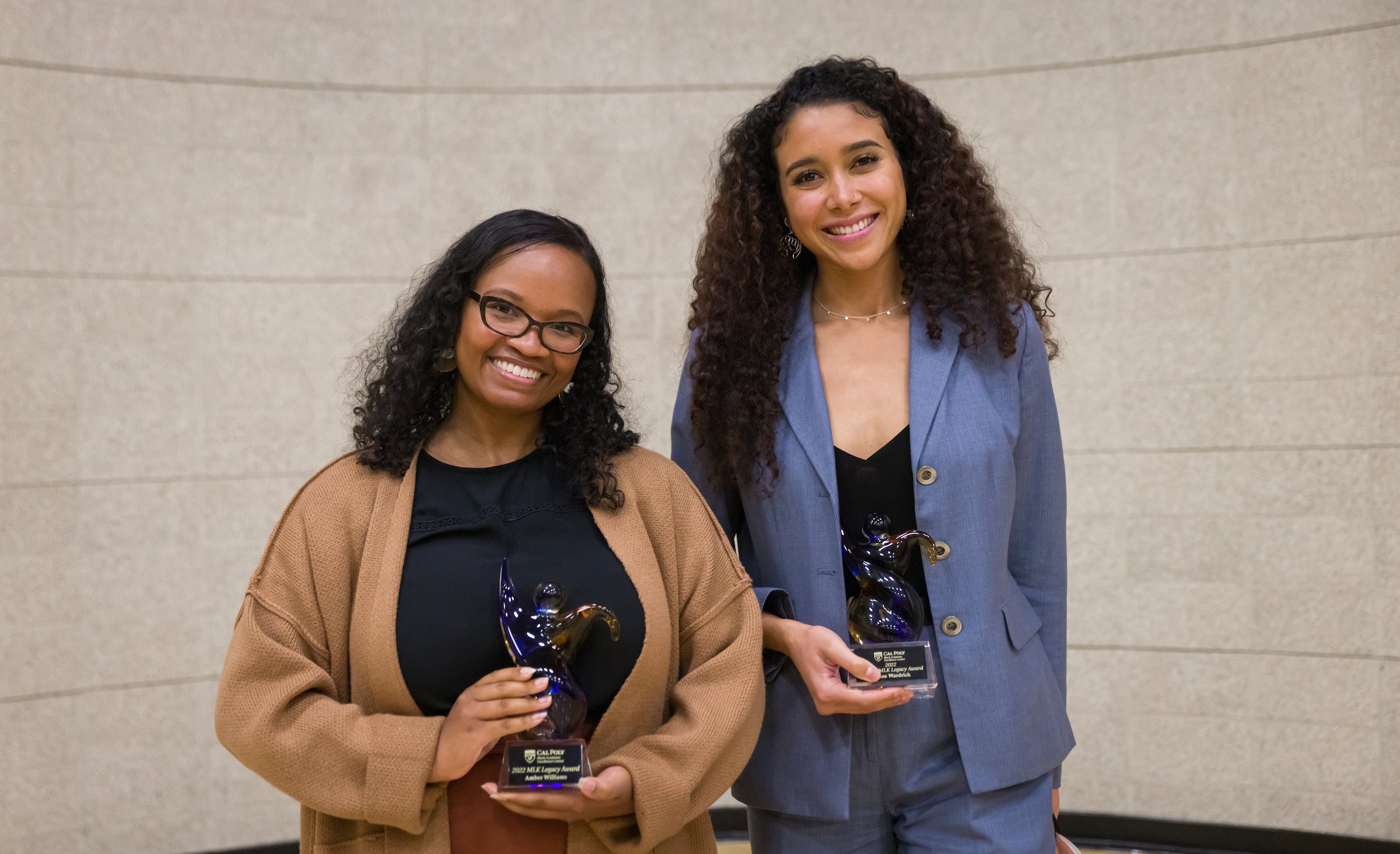
Wardrick currently serves as the president of the Cal Poly Black Student Union, treasurer for the Cal Poly Chapter of the National Society of Black Engineers and is working on a thesis project exploring how architecture can create inclusive communities. She recently sat down with Cal Poly News to discuss her reaction to receiving the MLK award, her roles as a leader on campus, and her hopes for the future.
How does it feel to receive this award?
It honestly just feels overwhelming, in a positive way. And I feel so honored. I’m grateful that all this work and all the efforts that have been put into creating a beautiful community on campus, especially for Black students, is being noticed. I also just feel so much love from my fellow board members at the Black Student Union and the acquaintances and friends I’ve been able to meet through my roles at Cal Poly—and also the staff and faculty who have supported me throughout the years.
Tell me about your work at the Black Student Union. Why did you decide to become a leader?
When I took on my current role as the BSU’s president, I was thinking about a first year or transfer student who might come into the BSU and what kind of experience and community we wanted to provide them. At the heart of it, that’s what influenced me to take on this leadership role. I really wanted to connect with that person and show them all the great things the BSU is and can be. This year, we’ve had really strong participation in our meetings and events. It’s been amazing to see not only my board members, but our membership succeed and remain engaged.
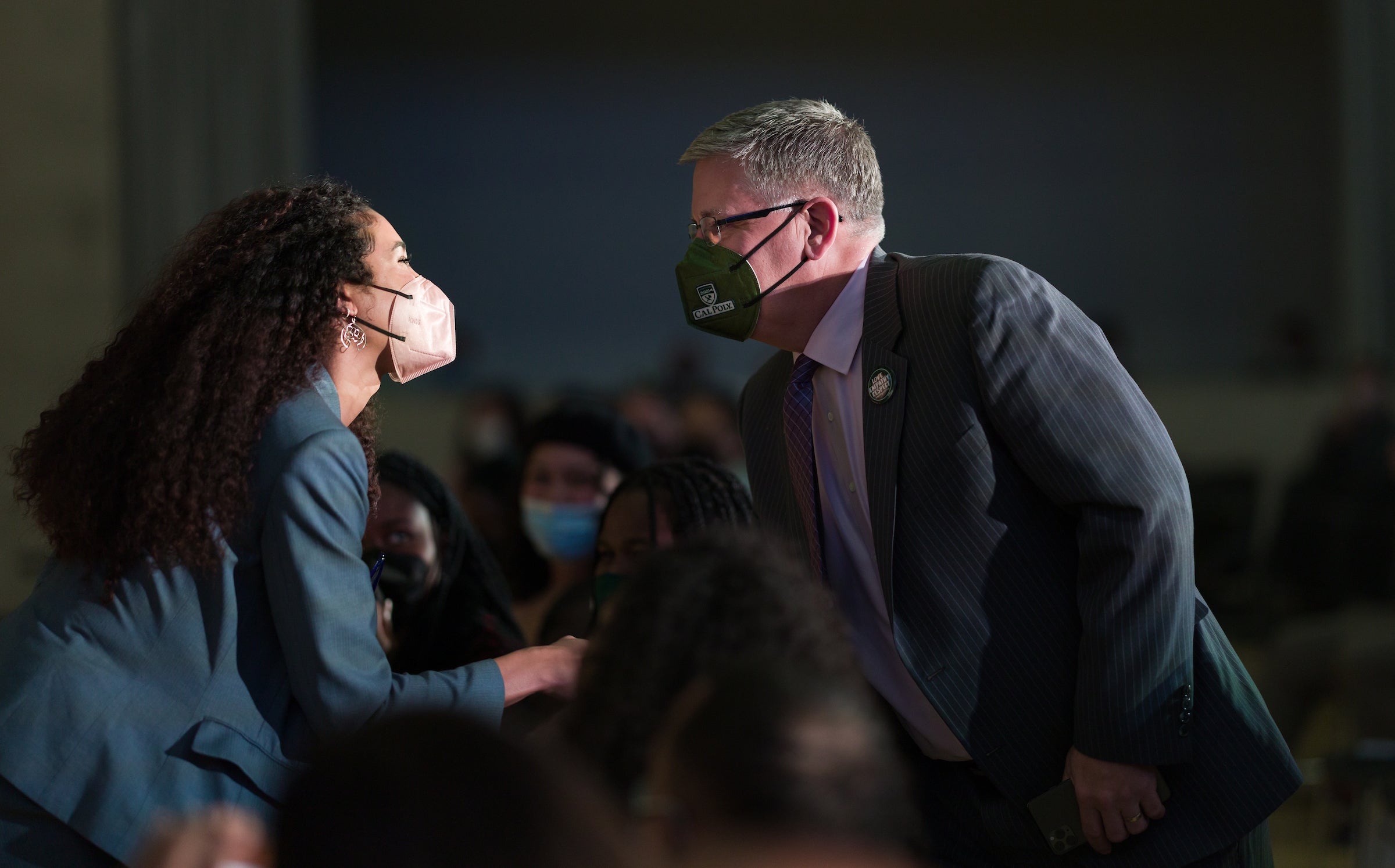
The BSU community means absolutely everything to me. When I see a smile from one of our members, or just get to have a conversation with someone, or see a new member come to their first meeting and feel comfortable, it pushes me to want to create more opportunities for those members. I think there’s so much potential for the BSU to take a role at the forefront of what grabs the attention of prospective students, or first year students, or transfer students, and helps them see themselves as part of the campus community.
During your time as a student, social and racial justice have been at the forefront of national conversation. What has it been like to be on campus during this time?
It’s been very difficult — especially during the transition into virtual learning. We were at home without the community or the support we usually have in person. During the summer of 2020, it was difficult to see some of the things occurring in San Luis Obispo, like the case of Tianna Arata, for example. But in our meetings with the Black Student Union, we provided a space to talk about these things. I was grateful for the opportunity to learn how everyone was feeling and to listen to people offer their input. In some cases, we also just took time to have moments of silence.
Now that we’re back on campus, we’re in the middle of another transition. People have been lonely and isolated, so we’re trying to offer space to smile and laugh a little. We still want to discuss what’s happening and look at how we can help and offer resources, but we also want BSU members to know they can come to our events or meetings and relax and just be part of community of people who look like them.
In the future, I see the BSU becoming a place of support. We’ll always discuss these topics, but we want our members to feel safe and comfortable. I think we’ve learned from all that trauma. We fought against it and now we know that bonding together is the most important way to get through it. That’s how we can create change and push for change within our communities.
You’re working on a thesis project to establish a multicultural center in San Luis Obispo and you’re also part of a group exploring how to establish a similar center locally. Can you tell me more about both projects?
My thesis is called “Constructing Belonging” and it’s really a study of what it means to belong, and how that can be emphasized through architecture. I thought it was a vital opportunity to understand what belonging means to organizations and community members in light of the events of the past few years and the present moment.
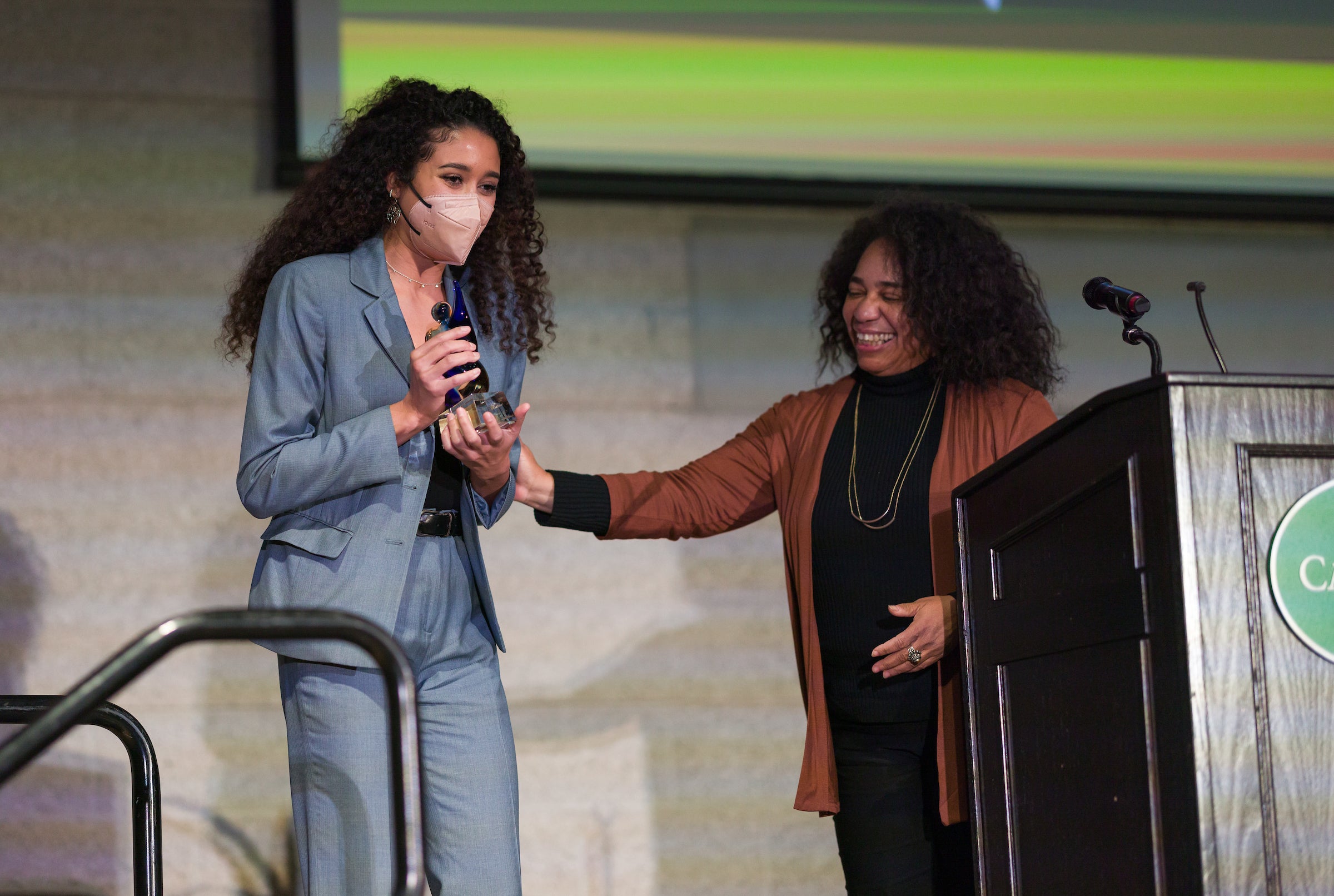
The other project is a working interdisciplinary research team of about 16 students, including myself, which is helping to create the design for the proposed SLO Multicultural Center — the first of its kind in the city. We work alongside city officials, including the mayor, and a ton of nonprofit and cultural organizations. We’re conducting interviews, design workshops and community symposiums that allow us to inform the city and ourselves and provide great information for the city’s feasibility study to establish the center.
My thesis is focused on redefining what multiculturalism is, the idea of belonging, and the role of a multicultural center. Then I have this other project that overlaps, which is more rooted in the realistic aspects: focusing on city planning and community engagement to make it happen. It’s all very exciting.
What are you looking forward to in terms of your architecture career?
I’ve been so fortunate to do this at a university level, and I’m really searching for firms, small or large, that are taking steps not only through design but community engagement and speaking to the populations they’re working with. I want to make sure the options I choose within my career align with my values because, at the end of the day, there are so many ways for designers to be involved in contributing to a better society.

